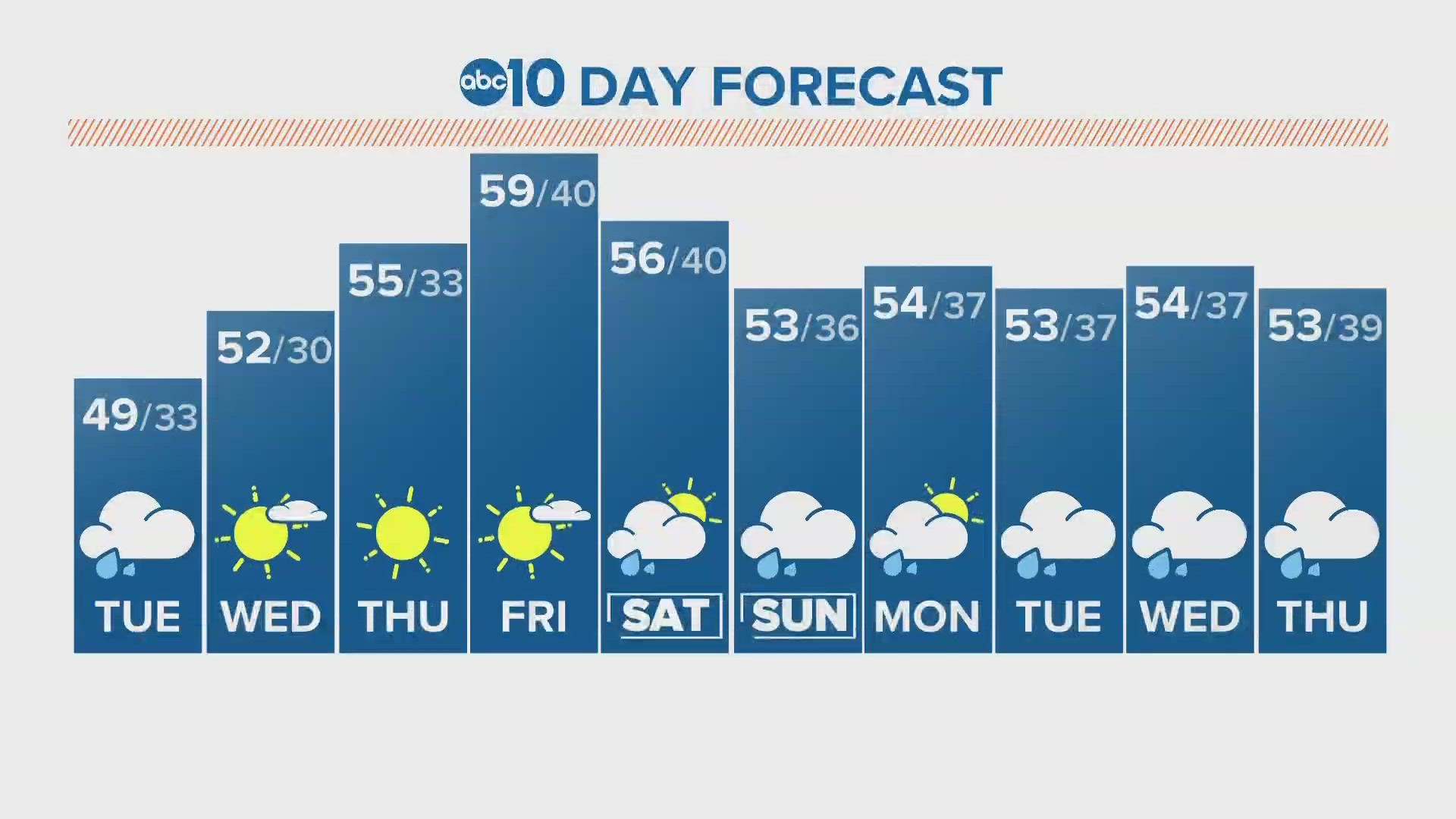SACRAMENTO, Calif. —
With California in the midst of yet another powerful winter storm, it's left many to wonder whether the latest round of snow, the massive snowpack and January's barrage of atmospheric rivers were a drought busting combination.
The statewide snowpack is currently at 186% of average to date. The snowpack will help fill the state’s reservoirs once warm weather spurs the melting season.
However, drought is complex, and it goes beyond simply filling reservoirs, according to both the California Department of Water Resources and U.S. Bureau of Reclamation.
"It's understandable that Californians are seeing the recent rain and snowfall and are wondering what that means for the drought," said Jeanine Jones, DWR’s Interstate Resources Manager.
She said it will take more than a single wet year for groundwater levels to substantially improve at a statewide scale.
Groundwater depletion continues to be a major problem in the Central Valley, and many communities have been overdrawing their wells due to little or no allocation of water from surface water sources.
“Many rural areas are still experiencing water supply challenges, especially communities that rely on groundwater supplies which have been depleted due to prolonged drought,” said Jones.
Plus, it's not clear whether Shasta and Trinity Reservoirs will completely fill up this summer.
"Two of our CVP (Central Valley Project) reservoirs, Trinity and Shasta, are at 33% and 60% of their capacity, respectively. These reservoirs are particularly important because they provide multiple benefits, primarily water supply, hydropower, environmental flows and supporting temperature management in the downstream rivers for fish," said Mary Lee Knecht, spokesperson for the Bureau of Reclamation.
The agencies will make drought evaluations once the rainy season wraps up.
"We typically wait until later in the precipitation season to assess the water supply outlook," said Jones. "It is also important to note that drought impacts vary by location as California is a large state. Drought recovery will need to be evaluated on a regional scale and will depend on local water supply conditions."
The governor's drought declaration from 2021 remains in effect, with a spokesperson for the governor saying it'll take more than single year of rain to bust the drought.
"There are many factors that go into any drought determination, and while these recent storms have eased drought conditions, many communities continue to experience water supply challenges, especially those who rely on depleted groundwater aquifers," said Daniel Villasenor, spokesperson for the governor. "With a state as geographically diverse as ours, the Governor has always prioritized regional needs that reflect the realities on the ground, and the Governor will continue to do that as water experts assess the impact the latest round of storms has on the drought."
WATCH ALSO:



















